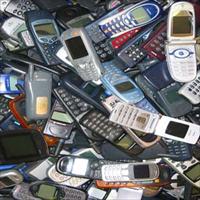Vast amounts of hazardous electronic waste unaccounted for

The fate of large quantities of electronic waste is unknown, according to a Greenpeace report Toxic Tech: Not in Our Backyard, published today. While some electronic waste may be accounted for by storage in attics or garages, much may be disposed of with mixed waste in landfills and incinerators or exported - often illegally - for dumping in Africa or for rudimentary recycling in Asia, where it has a high toll on health, safety and the environment.
Amsterdam, 21 February 2008 – The fate of large quantities of electronic waste is unknown, according to a Greenpeace report Toxic Tech: Not in Our Backyard, published today. While some electronic waste may be accounted for by storage in attics or garages, much may be disposed of with mixed waste in landfills and incinerators or exported - often illegally - for dumping in Africa or for rudimentary recycling in Asia, where it has a high toll on health, safety and the environment.
Even in regions such as the EU that are subject to tighter regulation, there is no precise information on what happens to as much as 75% of e-waste generated. In the US, this figure could be as high as 80% or more, since the amount of e-waste which is reported for recovery includes some of the e-waste that is exported to developing countries.
In newly industrialised countries it is almost impossible to estimate the amount of e-waste escaping any form of treatment or management, although in India, it is estimated that around 99% of domestic and imported e-waste, 143,000 tonnes per year, ends up in the informal recycling sector or is simply dumped.
“It is the scrap yard workers in Asia who are bearing the toxic burden of e-waste. They are exposed to a cocktail of toxic chemicals when the products are broken apart, polluting the water, air and soil of not only the scrap yards but the surrounding neighbourhood,” said Martin Hojsik, Greenpeace International toxics campaigner. “The mountain of obsolete electronic products is expanding at a huge rate as our consumption of electronic devices continues to grow rapidly1.”
Figures provided by four PC manufacturers who have already developed take-back and recycling activities suggest that only around 10% of own-branded end-of-life products were recycled. The figures for mobile phones were even lower, with only 2-3% being recycled. This means that, even for those companies reporting their own-brands, the hidden flow of e-waste branded products currently amounts to an average of 91% of past sales.
“The reality is that we cannot say with any certainty what happens to e-waste once it has escaped responsible recycling. This is why manufacturers of electronic goods need to increase their efforts to collect and responsibly treat e-waste, introduce voluntary take-back schemes and remove hazardous substances from their products so they can be more safely and easily recycled,” added Hojsik. “Only in this way can we ensure that the dangerous tide of toxic e-waste is stemmed, and that the hidden flow of e-waste doesn’t become a problem in anybody’s backyard.”
 Back and Next - Back and Next
Back and Next - Back and Next See Also - See Also
See Also - See Also